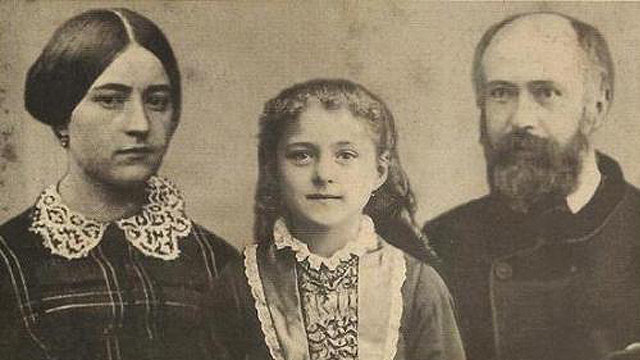The Martins of Lisieux
by Michael O’Connell (St Thérèse National Office, 56 Angier Street, Dublin 2, €5.00; contact Pat Sweeney at 086-819-8186)
This brochure is a work of pietas by a devotee of St Thérèse. The beautifully illustrated booklet is in two parts, the first concerns the grave of the saint, the second the burial place of the extended Guérin family.
Sr Thérèse of the Child Jesus died in the Carmelite Convent at Lisieux on September 30, 1897. At that time the French government exhibited its hostility to the Catholic Church in many ways, including issuing a regulation that religious were to be buried in a public cemetery rather than as was their custom in their convents or institutions.
Hence Sister Thérèse was buried in the public cemetery in Lisieux in a plot provided by her uncle Isidore Guérin.
From the outset people visited the grave and prayed for Thérèse’s intercession.
The numbers of those visiting increased dramatically following the publication of her spiritual memoir The Story of a Soul. Among the miraculous cures claimed was that of Edith Piaf (1915-1963). Soon after birth she developed cataracts and was blind for three years. Her grandmother brought her to the grave at Lisieux, where her sight was restored.
As a result throughout her life she treasured a picture of St Thérèse which she kept on her person. The remains of St Thérèse were exhumed in 1910 when the cause for her canonisation was initiated.
Eventually they were laid to rest in the Carmelite convent in Lisieux. Zélie Martin (née Guérin), the mother of St Thérèse, was a truly remarkable person.
Such was her influence that, apart from Thérèse, her four other daughters dedicated themselves to the religious life. She and her husband Louis were canonised by Pope Francis on October 18, 2015. In his homily he declared significantly ‘Remember this: Blessed Louis Martin and Blessed Zélie Guérin were not canonised because of their daughter St Thérèse – she was canonised because of them’.
To find three canonised saints in the one family is unprecedented. But this is not the end of the story. Léonie was the last of Thérèse’s siblings to adopt the religious life.
In her early years she was, it seems, a difficult child and a dysfunctional adult. However, in her later years she became, according to her contemporaries and peers, a person of heroic virtue. As a result the process of her beatification and canonisation was begun in 2015.
Michael O’Connell concludes with a well-deserved tribute to the late Fr J. Linus Ryan, O.Carm (1928-2009). He was a tireless promoter of devotion to St Thérèse and brought the Relics of St Thérèse to Ireland in highly publicised visits in 2001 and 2009.
Readers should also be aware that The Little Flower St Thérèse of Liseux: The Irish Connection by Colm Keane and his wife Una O’Hagan (published by Capel Island Press, €11.99) is widely available and, in describing favours to many Irish people, is naturally of special local interest.



